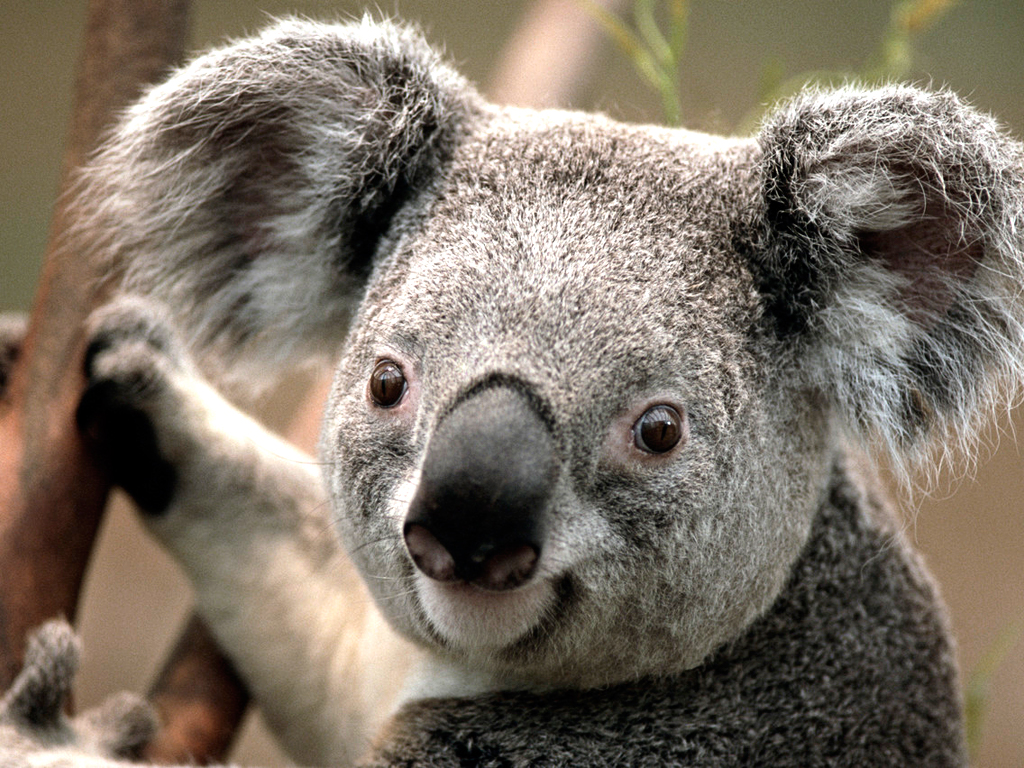
KOALAS
The koala is a stocky animal with a large head and vestigial or non-existent tail.It has a body length of 60–85 cm (24–33 in) and a weight of 4–15 kg (9–33 lb),[28] making it among the largest arboreal marsupials.Koalas from Victoria are twice as heavy as those from Queensland.The species is sexually dimorphic, with males 50% larger than females. Males are further distinguished from females by their more curved noses and the presence of chest glands, which are visible as hairless patches.As in most marsupials, the male koala has a bifurcated penis,and the female has two lateral vaginas and two separate uteri.The male's penile sheath contains naturally occurring bacteria that play an important role in fertilisation.The female's pouch opening is tightened by a sphincter that keeps the young from falling out. The pelage of the koala is thicker and longer on the back, and shorter on the belly. The ears have thick fur on both the inside and outside.The back fur colour varies from light grey to chocolate brown.The belly fur is whitish; on the rump it is dappled whitish, and darker at the back.The koala has the most effective insulating back fur of any marsupial and is highly resilient to wind and rain, while the belly fur can reflect solar radiation.The koala's curved, sharp claws are well adapted for climbing trees. The large forepaws have two opposable digits (the first and second, which are opposable to the other three) that allow them to grasp small branches. On the hindpaws, the second and third digits are fused, a typical condition for members of the Diprotodontia, and the attached claws (which are still separate) are used for grooming.As in humans and other primates, koalas have friction ridges on their paws.The animal has a sturdy skeleton and a short, muscular upper body with proportionately long upper limbs that contribute to its climbing and grasping abilities. Additional climbing strength is achieved with thigh muscles that attach to the shinbone lower than other animals.The koala has a cartilaginous pad at the end of the spine that may make it more comfortable when it perches in the fork of a tree.
WHERE WILL YOU FIND THEM?
You will find the koalas at the Northern parts of the Lost Forest up high the trees.
